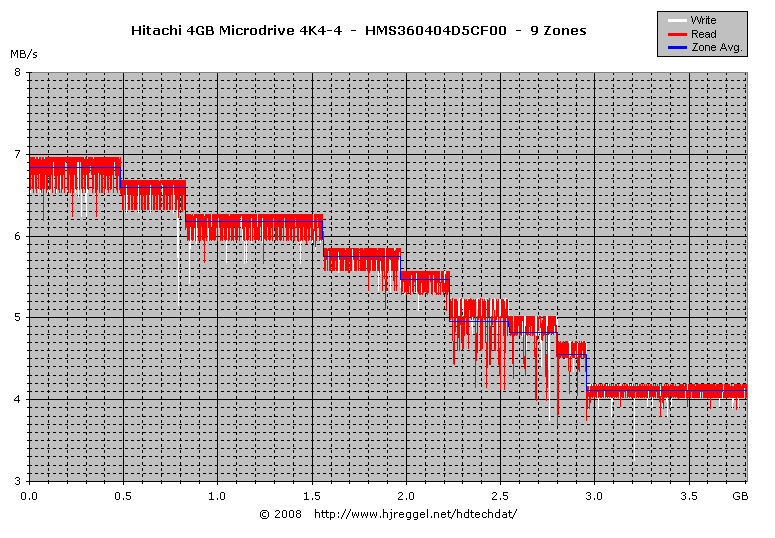Hitachi 8GB Microdrive 3K8-8
Quick links: Harddisk · Performance · Enclosure
Hitachi 8GB Microdrive 3K8-8 HMS361008M5CE00 Harddisk
The 3K8 series is the third generation Microdrive series from Hitachi. This series has the reduced footprint of 40×30mm² and the tiny 35-pin ZIF-ATA connector. The Hitachi Microdrive 3K8-8 HMS361008M5CE00 is the highest capacity model from Hitachi. Seagate used the same form factor and interface for their 12GB ST612712DE .
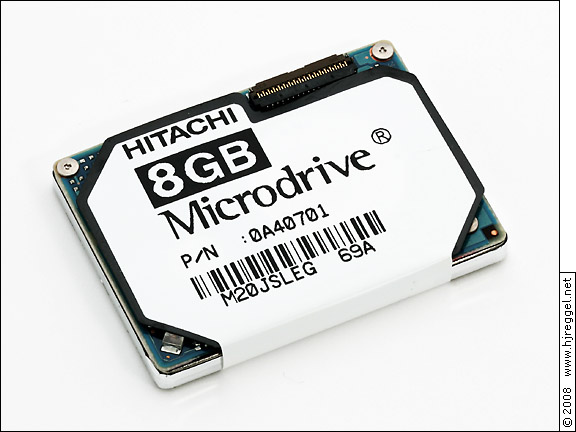 | |
| Hitachi 8GB Microdrive HMS361008, Top |
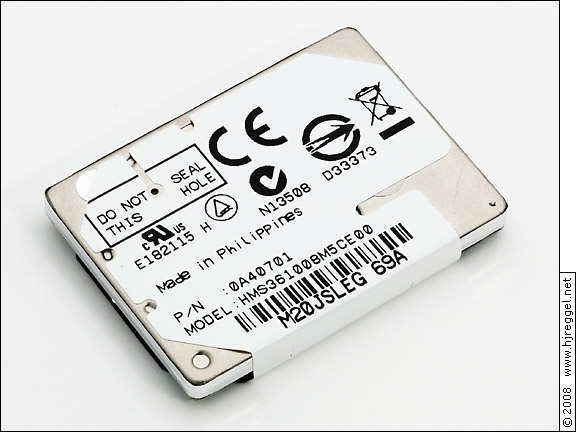 | |
| Hitachi 8GB Microdrive HMS361008, Bottom |
Unlike for most other models, the PCB of the 3K8 series is mounted with the component side towards the outside, and only the label sticker as protection. That makes it easy to take a peek at the electronics.
 | |
| Hitachi 8GB Microdrive HMS361008 |
Hitachi 8GB Microdrive 3K8-8 HMS361008M5CE00 Performance
The graph below was taken through the supplied USB bridge with Genesys GL811E controller.

There seems to be a timing problem when writing through the USB bridge. The Seagate ST1.3 12GB shows a perfect graph using the same bridge. Currently, I have no adapter to test the ZIF-35 drives in native ATA mode.
Enclosure: ExcelStor GStor Mini 8GB
The harddisk is from an ExcelStor GStor Mini 8GB (GSMS7008), a harddisk based USB key. Given the fact that it holds a 40×30×5mm³ Microdrive, and features a swing-out USB plug, the size of 60.0×36.8×11.8mm³ is very small. The enclosure seems to be a generic design with branding option, see the Verbatim Store'n'Go for more photos.
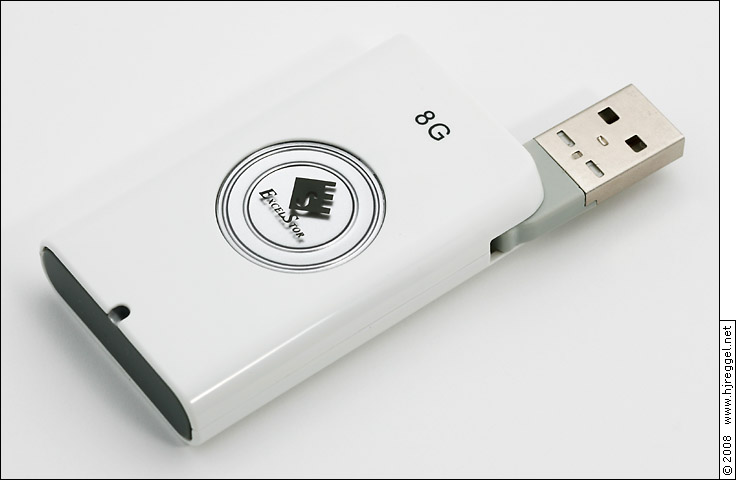 | |
| ExcelStor GStor Mini 8GB Enclosure |
Below you can see what's inside. The PCB with the components adds about 2.4mm height, the rubber frame adds about 1.5mm height. The rubber is actually designed for the Seagate ST1.3, and it does not fit perfectly on the Hitachi drive.
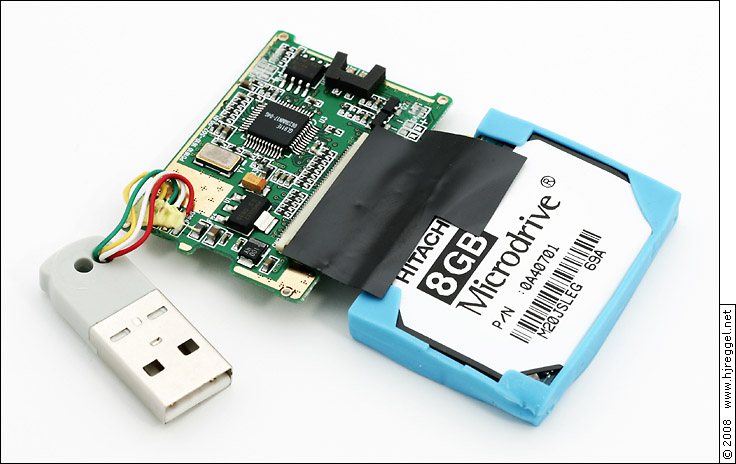 | |
| USB Plug, PCB and Microdrive with Shock Protection |
Hitachi 6GB Microdrive 3K6-6
Quick links: Harddisk · Performance
Hitachi 6GB Microdrive 3K6-6 HMS360606D5CF00 Harddisk
This is a "white label" (OEM) Hitachi 6GB Microdrive 3K6-6 HMS360606D5CF00. This version has serious restrictions, and does not even work in PCMCIA-ATA mode. As expected, it works fine with ATA hosts and regular card readers.
The disk reports a size of 6,144,284,672 Bytes (5.72GB) with 12,000,556 sectors. This size can't be mapped to regular CHS values, the reported mapping of CHS 11905/16/63 can address 12,000,240 sectors with 316 sectors (158kB) unusable space. Supported ATA modes are PIO-4, MDMA-2 and UDMA-2. As part of the CF+ specification, the disk reports a maximum power requirement of 256mA.
 | |
| Hitachi 6GB Microdrive HMS360606, Top |
 | |
| Hitachi 6GB Microdrive HMS360606, Bottom |
This seems to be the first version having the PCB mounted with the component side up. Below you can see what's underneath the top label.
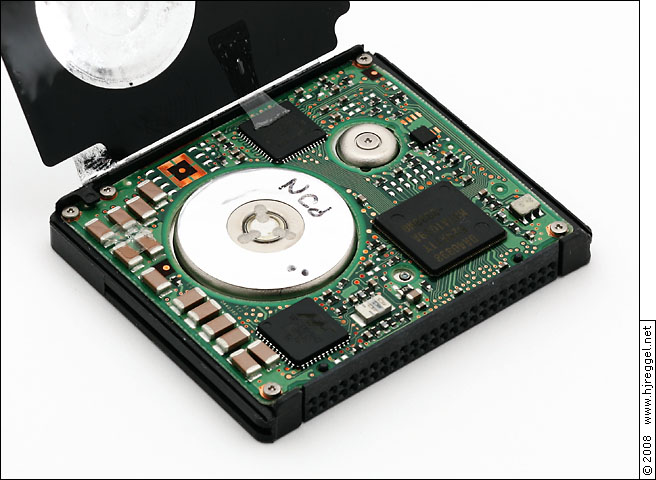 | |
| Hitachi 6GB Microdrive HMS360606, Main PCB |
Hitachi 6GB Microdrive 3K6-6 HMS360606D5CF00 Performance
There were at least two different formatting schemes used for the HMS360606D5CF00, one using 15 media zones, and one using 14 media zones. But there is only a small difference in the data rates. The diagrams below were taken on an ICH6R ATA port using a CF-ATA adapter. With a transfer size of 4MB, 1465 samples were taken.
Below is the read/write diagram for the 15 media zones version. The sustained read rate goes down from 8.98MB/s to 4.66MB/s with an average sustained read rate of 6.90MB/s.
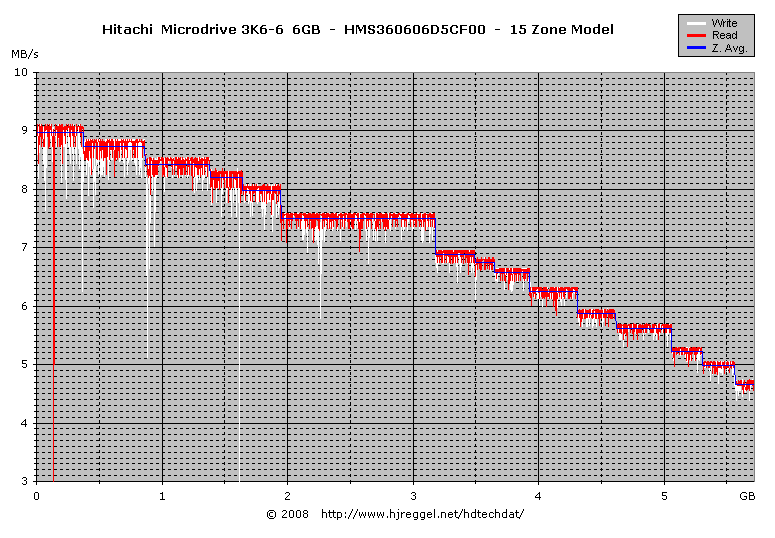
Below is the read/write diagram for the 14 media zones version. The sustained read rate goes down from 8.76MB/s to 4.45MB/s with an average sustained read rate of 6.68MB/s.
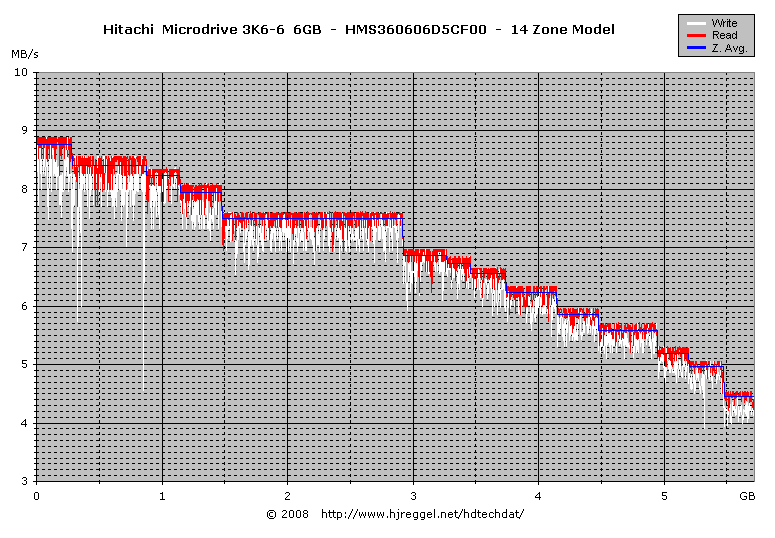
Hitachi 4GB Microdrive 3K4-4
Quick links: Harddisk · Performance
Hitachi 4GB Microdrive 3K4-4 HMS360404D5CF00
The first batches of the 4GB Microdrive were completely sold to Creative for their mp3 player model "MuVo²". This device was sold at about 60% of the announced price of the retail model of the Microdrive, while only a few overpriced 2GB models were available on the market. When the news spread that the Microdrive could easily be "ripped" from the MuVo², most people bought the mp3 player just to get the Microdrive. Some even started a small business selling the ripped drives and empty shells, some succeeded in mounting one of their old CF cards to still have an mp3 player with reduced storage capacity. However, later batches of the Microdrive were patched, so that they would not work in digital cameras.
This is a Hitachi 4GB Microdrive 4K4-4 HMS360404D5CF00 from a Creative Nomad MuVo² mp3 player from May 2004 that still worked with digital cameras. The Disk reports a size of 4,095,737,856 Bytes (3.81GB) and a mapping of CHS 7936/16/63 (7,999,488 sectors). Supported ATA modes are PIO-4, MDMA-2 and UDMA-2. As part of the CF+ specification, the disk reports a maximum power requirement of 256mA.
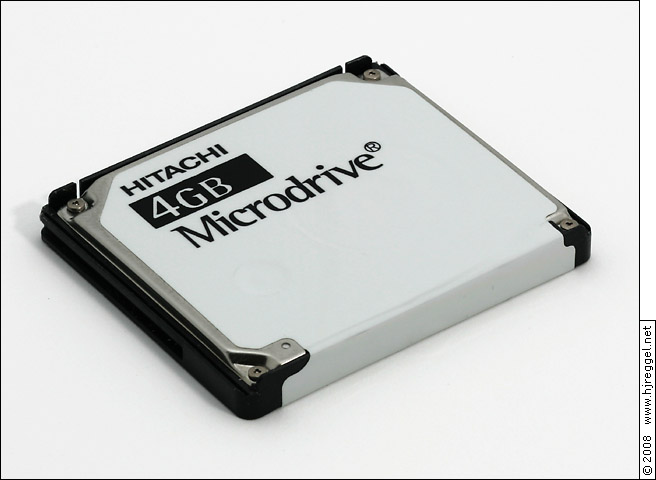 | |
| Hitachi 4GB Microdrive HMS360404 |
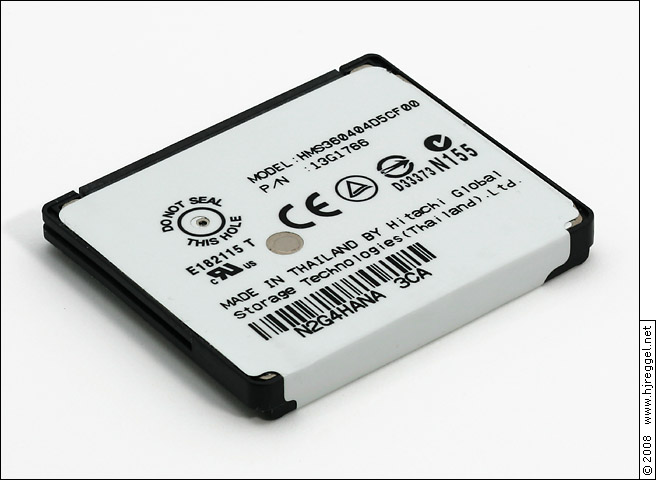 | |
| Hitachi 4GB Microdrive HMS360404 |
Hitachi 4GB Microdrive 3K4-4 HMS360404D5CF00
There were at least two different formatting schemes used for the HMS360404D5CF00, one using 9 media zones, and one using 11 media zones. But there is only a small difference in the data rates. The diagrams below were taken on an ICH6R ATA port using a CF-ATA adapter. With a transfer size of 2MB, 1953 samples were taken.
Below is the read/write diagram for the 11 media zones version. The sustained read rate goes down from 6.79MB/s to 4.12MB/s with an average sustained read rate of 5.33MB/s. With this formatting scheme, zones 1-3 show slightly irregular data rates.
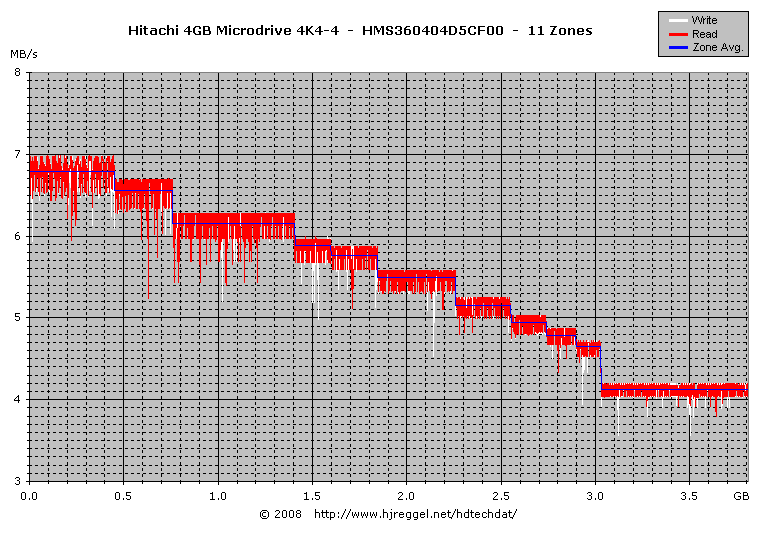
Below is the diagram for the 9 media zones version. The sustained read rate goes down from 6.84MB/s to 4.11MB/s with an average sustained read rate of 5.30MB/s. The slightly irregular read rate for zones 6-8 can be observed through different interfaces, and seems to be caused by the disk itself.
